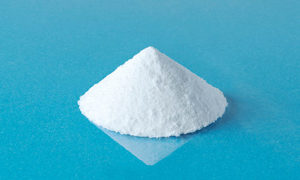Description
Threonine feed grade is a white crystalline powder containing at least 98.5 % of the active agent. It is highly purified with a low content of dust and volatile substances.
Threonine (L – threonine feed) participates in the formation of natural proteins and is an essential amino acid. L – threonine has an effect on muscle growth and meat production efficiency. It is also one of several possible precursors of nonessential glycine acid, which is synthesized in an animal’s body, and in this sense the threonine plays a part in the regulation of digestion.
| Appearance | WHITE rhomb-shaped crystalline powder |
| Assay, % | ≥ 98.50 |
| Specific rotation | -26° ~ -29° |
| Loss on ignition, % | ≤ 1.0 |
| Ignited residue, % | ≤ 0.3 |
| Arsenic (As), % | ≤ 0.0002 |
| Heavy metals (Pb), % | ≤ 0.0003 |
Many types of grain and other feed ingredients have a low threonine content, therefore, threonine needs to be added in order to deal with this shortage. This is especially important when balancing rations based on wheat, barley and sorghum. Threonine is usually the second limiting amino acid in these types of grain.
It is impossible to achieve maximum use of feed resources in pig farming without threonine. Adding pure amino acids to rations for pigs allows a reduction of protein content without slowing down the growth process, and improves the usage of feed. It is generally agreed that if the objective is to minimize the fat content of the pig (maximize protein concentration) the need for amino acids is higher than if the objective is to reach maximum speed and efficiency of growth. In some cases, there is a tendency to increase fat using rations with lowered protein content and amino acid supplements. In poultry special attention is paid to the reduction of protein content by adding concentrations of amino acids that ensure maximum development of flock replacements and maximum egg-production of laying hens. Such added concentrations also maximise body weight gain and feed conversion in broiler chickens. Methionine and lysine are the first and second limiting amino acids in poultry; adding of threonine to feeds for broilers and laying hens already containing supplements of methionine and lysine is also effective, especially at the early stages of growth.
The preparation is introduced into animal feed, premixes and feed additives at feed mills or farms. The amount of introduced threonine depends on the species and age of the animals, including poultry, and is determined in accordance with the applicable standards.






Reviews
There are no reviews yet.